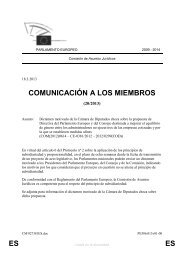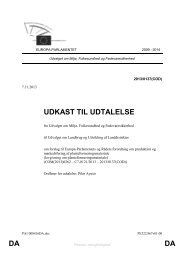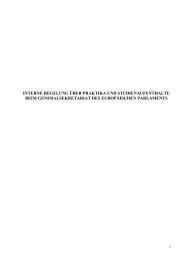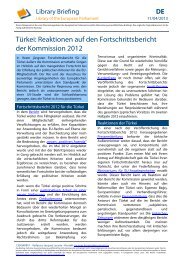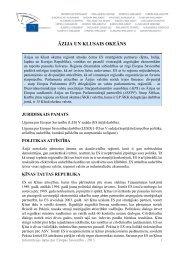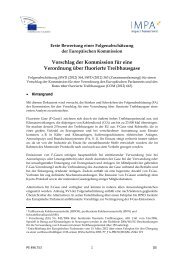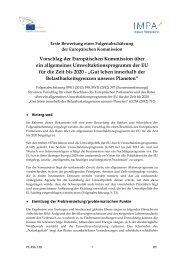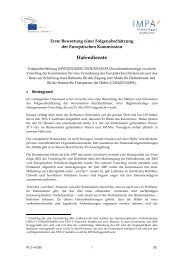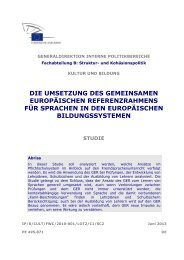PARLIAMENT AND DEMOCRACY - Inter-Parliamentary Union
PARLIAMENT AND DEMOCRACY - Inter-Parliamentary Union
PARLIAMENT AND DEMOCRACY - Inter-Parliamentary Union
You also want an ePaper? Increase the reach of your titles
YUMPU automatically turns print PDFs into web optimized ePapers that Google loves.
A representative parliament I 23<br />
■ Reserved parliamentary seats for women, for example to be filled according<br />
to the proportion of seats won overall by the respective parties.<br />
■ Guaranteed proportions of party lists or ‘quotas’ to be filled by women,<br />
including top places.<br />
■ Women-only short lists for candidate selection in constituency-based<br />
systems, or constituency ‘twinning’, with a requirement that one of each<br />
sex be selected.<br />
Countries with markedly low female participation rates have begun to make<br />
a significant difference by the adoption of such measures. For example, in<br />
2004 the Republic of Korea introduced a combination of all the above measures<br />
into its relevant laws. The Political Party Act now requires the assignment<br />
of 50% of the proportional representative seats to women, and the inclusion of<br />
women in every two candidates from the top of the candidate list. The Law on<br />
Political Funds provides state subsidies to parties nominating women to run in<br />
30% or more electoral districts. As a consequence of these changes the percentage<br />
of women in the 17 th National Assembly doubled from the previous<br />
assembly to 13%. Other countries have achieved a higher percentage where<br />
seats allocated to party lists form a larger proportion than in Korea.<br />
Such affirmative action measures can be justified on equality grounds by<br />
reference to article 4.1 of the UN Convention on the Elimination of All Forms<br />
of Discrimination against Women:<br />
Adoption by States Parties of temporary special measures aimed at<br />
accelerating de facto equality between men and women shall not be<br />
considered discrimination……these measures shall be discontinued<br />
when the objectives of equality of opportunity and treatment have been<br />
achieved.<br />
The implication of this article is that such measures will help to bring about<br />
long-term change; but they cannot do so on their own. This is demonstrated by<br />
the example of Bangladesh, where the provision reserving 30 additional<br />
parliamentary seats to women expired in 2000, with the consequence of a<br />
dramatic fall in women’s representation in parliament from nine to two per<br />
cent. The provision has now been restored with an increase of additional seats<br />
to 45. So affirmative action measures are likely to be a necessary but not<br />
sufficient condition for improving women’s participation for the foreseeable<br />
future.




